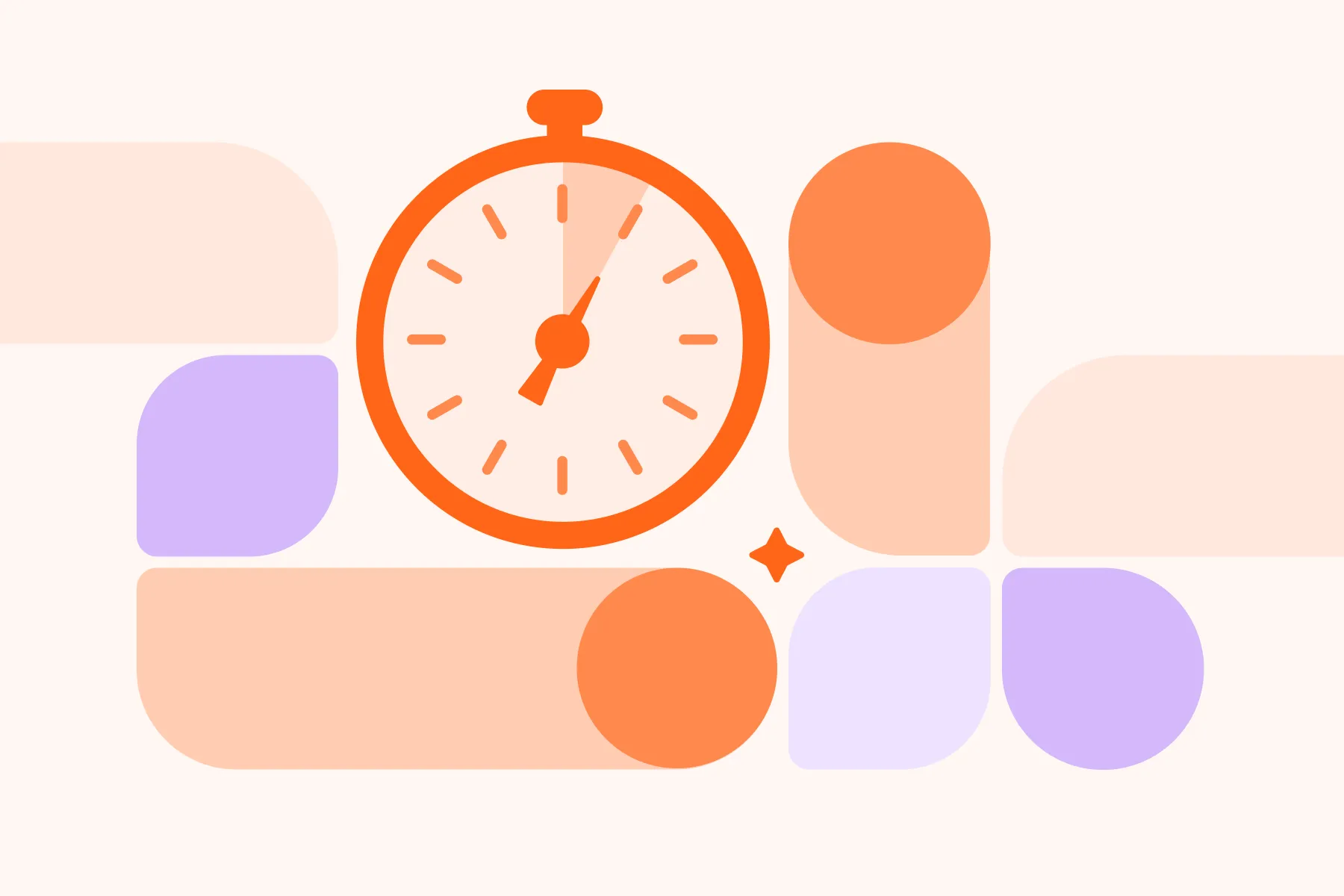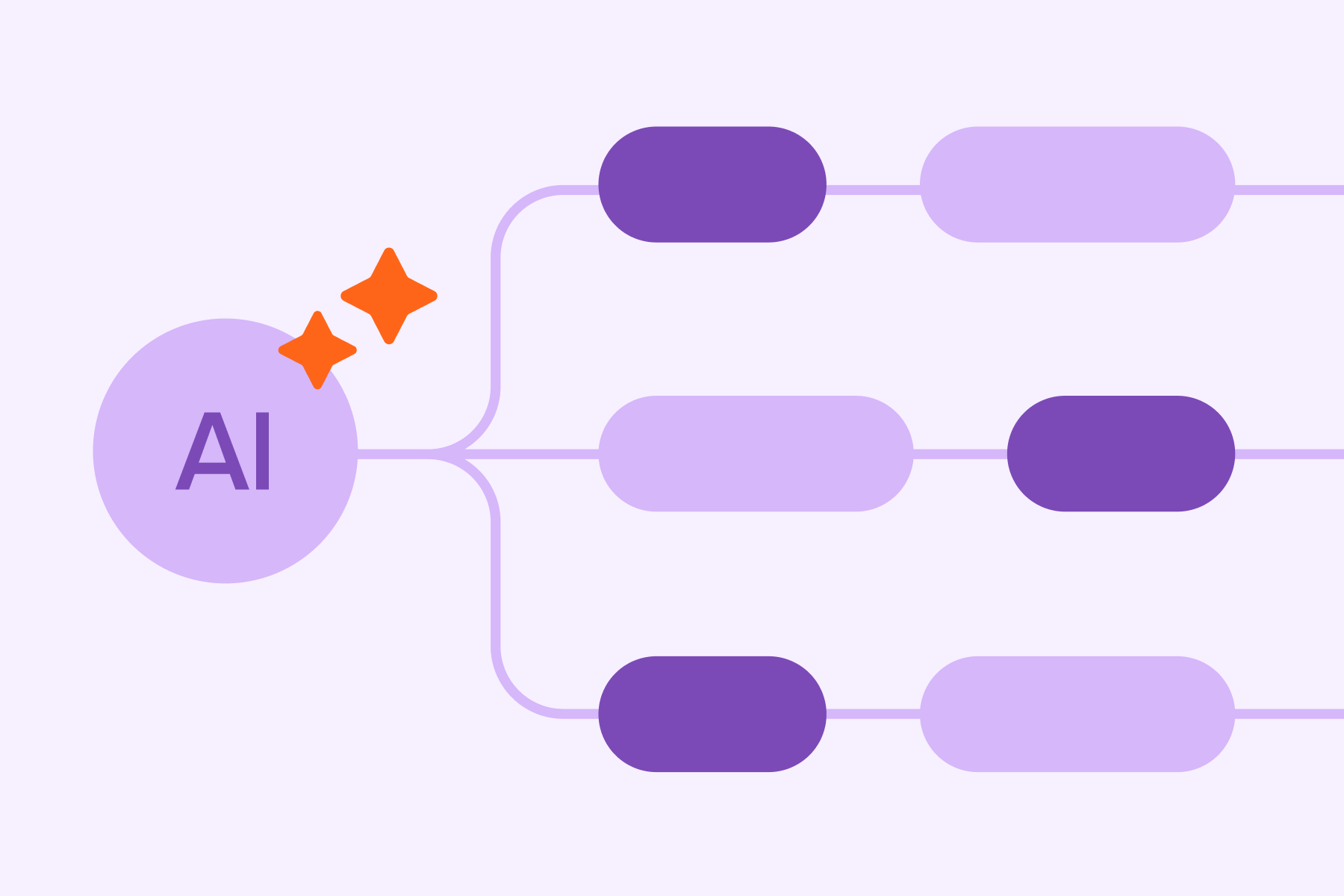User Acquisition Agency vs In-House Growth: Which one?
Anastasiya Khvin
October 1, 2025

We've been in the trenches for over a decade now. We've watched SaaS companies burn through millions trying to crack the growth code. Most of them? They're getting it wrong.
The question isn't whether you need growth help – it's whether you build it or buy it.
At Aimers, we've seen both sides of this coin. We've rescued SaaS companies from their own misguided internal teams. We've also seen acquisition agencies completely botch straightforward user acquisition campaigns. So let's cut through the noise and talk about what actually works in 2025.
The Evolution of User Acquisition Agencies in 2025
Remember when you could throw some Facebook ads at the wall and see what stuck? Those days are gone. Dead and buried.
Customer acquisition agencies today aren't running ads and hoping for the best. The best user acquisition agency partners have evolved into growth architects who understand the entire customer journey. We're talking about acquisition agencies that can improve your trial-to-paid conversion rate while simultaneously reducing acquisition costs.
At our agency, we've managed over $30 million in ad spend across 100+ SaaS success stories. This isn't a humble brag, it's context for why we know the difference between traffic and revenue. Because most companies confuse the two. According to recent industry research, the average SaaS customer acquisition cost is $702, though this varies dramatically across sectors.
Traffic feels good. Big numbers in your analytics dashboard make you feel like you're winning. But traffic without conversions? That's expensive entertainment.
Why SaaS Companies Are Rethinking Their Customer Acquisition Strategies
The math is brutal right now. Customer acquisition costs have increased by 222% across industries over the past eight years, and with over 30,000 SaaS companies competing for the same eyeballs, you can't afford to learn through trial and error anymore.
We see it constantly. Brilliant SaaS founders who can build incredible products but struggle with the marketing piece. They hire their first marketing person - usually someone with "digital marketing experience" - hand them a budget, and expect magic.
Six months later? They're burning through cash with little to show for it.The challenges we outlined in our analysis of common mistakes SaaS companies make with their marketing budget happen more often than you'd think.
The Hidden Costs of Building In-House User Acquisition Teams
A decent user acquisition specialist in the US market runs you $80K-120K base salary. Plus benefits. Plus equity. But that's just the beginning. They need tools – easily $2-3K monthly for the marketing stack. They need training time to understand your specific market. They need management overhead.
One person can't do everything. Performance marketing across Google, LinkedIn, Meta, and emerging platforms requires different skill sets entirely. Your Google Ads expert probably isn't a LinkedIn advertising virtuoso. So now you need multiple hires, each with their own learning curve.
And speaking of learning curves – they're expensive. Every mistake your new hire makes? That's real money disappearing from your ad spend.
We audited one SaaS company's internal efforts last year. They'd burned through $200K in ad spend over eight months with their new hire. The campaigns were targeting the wrong audiences; the landing pages had obvious conversion problems; the attribution tracking was completely wrong. All those issues were fixable within the first week.
When Top User Acquisition Agencies Outperform Internal Teams
Top user acquisition agencies bring something internal teams usually can't match: pattern recognition across dozens of companies. When we improve a trial signup flow for a project management SaaS, we're applying learnings from finance software, marketing tools, and HR platforms. Last quarter, we increased a client's Google Ads sales by 100%. Why? Because we recognized a pattern we'd seen in three other verticals.
An internal team wouldn't have that context. They're working in isolation, while user acquisition companies are working with the benefit of hundreds of experiments across different industries.
It's like the difference between your neighborhood mechanic and the guy who works exclusively on BMW engines. Sure, your local mechanic knows cars. But when your Beemer starts making that weird noise, you want the specialist.
Full Services User Acquisition Agency: The Complete Growth Engine
Most marketing agencies want to be everything to everyone. We don't.
We're crystal clear about what we do: performance marketing that drives trials and revenue for SaaS companies. But within that focus? We're comprehensive.
When we say "full services user acquisition agency," we mean complete accountability for your paid acquisition. Strategy development, audience research, campaign setup across all relevant platforms. Creative testing, landing page improvements, conversion tracking, ongoing performance analysis.
Our team handles everything from Google Ads to LinkedIn campaigns, but we also do the deep work that most acquisition agencies skip. Landing page design that actually converts. Conversion rate optimization that finds the real leaks in your funnel. Analytics and tracking that gives you clean data instead of vanity metrics.
Beyond Campaign Management: What Best User Acquisition Agency Partners Deliver
A true user acquisition agency becomes an extension of your team. Not in the cheesy "partnership" way that everyone claims. In the practical sense that we're in your Slack, we know your product roadmap, and we adjust our marketing campaigns based on your customer feedback.
Our client TuxCare didn't just want more leads. They needed qualified leads that would actually convert to paid plans. We delivered a 6x increase in leads with 61% lower customer acquisition cost. Because we understood their specific buyer persona and adjusted everything from ad creative to landing page messaging.
One of our team members always says, "Marketing rarely fails because of low traffic. The real leak is often deeper in the funnel." That's exactly what we found with TuxCare – their traffic was fine, but their conversion path was broken in three different places.
This insight comes from our experience with 15 advanced SaaS marketing metrics that actually matter, not just the vanity metrics most agencies focus on.
Mobile User Acquisition Expertise That In-House Teams Lack
If you're a mobile SaaS or have a significant mobile app component, good luck finding someone internally who really understands mobile user acquisition.
The platforms are different. The attribution is complex. The user acquisition strategies don't translate from desktop.
Mobile app user acquisition requires understanding app store optimization, in-app event tracking, and cohort-based analysis. Most internal teams end up treating mobile like desktop advertising with smaller screens. That's expensive. Really expensive.
The Speed Factor: User Acquisition Companies vs Internal Growth Teams
Speed matters in SaaS. Your runway matters. Your growth trajectory matters.
How quickly can you start driving qualified traffic that converts to revenue?
With an internal team, you're looking at 3-6 months before they're productive. That's hiring time, onboarding time, and the inevitable period where they're learning your market and making expensive mistakes. With the right user acquisition company? You can have campaigns live within two weeks and progress happening from day one.
We had a client who'd been trying to crack LinkedIn advertising for eight months with their internal team. They were generating leads, but the cost per acquisition was unsustainable. We took over the account, restructured their targeting and creative approach, and reduced their CPA by 70% within the first month.
Customer Acquisition Agencies: Specialized Knowledge vs Generalist Approach
A lot of SaaS companies get confused. They think they need a "full-service digital marketing agency" that can handle everything from content marketing to PR.
But user acquisition? That's a specialized skill that benefits from focused expertise.
Customer acquisition agencies that actually move the needle understand the nuances of different acquisition channels. We know that LinkedIn creative that works for HR software probably won't work for developer tools. We understand that Google Ads acquisition strategies for high-ticket enterprise sales are completely different from self-serve product approaches.
Industry-Specific Acquisition Strategy Development
Generic acquisition strategies produce generic results. Period.
The customer acquisition plan that works for a CRM tool won't work for a cybersecurity platform. The messaging that resonates with marketing managers doesn't resonate with CTOs. Different audiences, different pain points, different buying processes.
We've developed industry-specific playbooks through years of testing across different verticals. When a fintech startup approaches us, we're not starting from scratch. We're applying proven frameworks from previous fintech acquisition campaigns while customizing for their specific value proposition.
Take our work with Cloudvisor, a cloud consulting company. Their internal team was generating plenty of traffic from broad "cloud services" keywords on Google. But the leads weren't converting to sales calls. We shifted their entire approach using Performance Max campaigns to target specific cloud migration scenarios. Lead quality improved by 130%, and opportunities increased by 50%.
Performance Marketing Mastery That Takes Years to Build Internally
Performance marketing isn't just spending money on ads. It's about understanding statistical significance, proper test design, attribution modeling, and lifetime value calculations.
These skills take years to develop. They require constant learning as platforms evolve. The global digital advertising market is projected to reach $786.2 billion by 2026, which means competition for attention is only getting fiercer.
Most internal teams learn one platform reasonably well and struggle with everything else. We're Google Premier Partners, Meta Marketing Partners, and certified across every platform that matters for B2B SaaS. That's not just badges - it's early access to new features, dedicated support channels, and insights that generic users don't get.
Would you rather have someone who's decent at everything or someone who's exceptional at the things that actually drive growth?
Cost Analysis: User Acquisition Agency vs In-House Investment
Building internally runs you $150K+ annually for a senior user acquisition specialist. Plus tools. Plus management time. Plus the opportunity cost of slow learning. And that's for one person who probably can't handle all the acquisition channels you need.
Working with a specialized user acquisition agency? Yes, our fees aren't cheap. But you're getting a team of specialists, proven processes, and immediate access to expertise that would take years to build internally.
The Real ROI of Top User Acquisition Companies
If we can't improve your user acquisition metrics enough to pay for our fees within 90 days, we're not doing our job.
Most of our clients see 20-40% improvements in key metrics within the first quarter.
Originality.AI saw a 210% increase in conversion rate working with our conversion rate optimization team. Another client, Demio, saw their customer base increase by 110% while we simultaneously decreased their customer acquisition cost by 24%. These translate directly to revenue growth that pays for our services many times over.
Hidden Expenses of Internal User Acquisition Efforts
What most SaaS companies don't calculate? The cost of mistakes.
When your internal team is learning Google Ads with your budget, every mistake costs money. When they're testing creative approaches without proper statistical methodology, you're burning cash on inconclusive tests.
We've audited hundreds of internal SaaS marketing efforts. The waste is staggering:
- Marketing campaigns targeting the wrong audiences
- Landing pages with obvious conversion problems
- Attribution tracking that's completely wrong
These mistakes can easily cost 2-3x what you'd pay for proper agency management.
One client came to us after their internal team had spent six months trying to make Facebook ads work for their B2B SaaS. They'd burned through $150K with almost nothing to show for it. The problem? They were using B2C targeting strategies for a B2B product. We restructured everything around LinkedIn and Google, and they hit their lead generation goals within 60 days.
As one of our senior strategists puts it: "Even the best ad campaign can't save a broken landing page or bad analytics."
Best User Acquisition Agency Selection: What to Look For
Not all user acquisition agencies in 2025 are created equal. Most are just generic digital marketing agencies with "user acquisition" in their service list.
Do they specialize in your type of business? SaaS user acquisition is different from e-commerce or lead generation. Make sure they understand subscription metrics, trial optimization, and B2B sales cycles. Can they show you specific results from similar companies? Ask for specific metrics: trial volume, conversion rates, customer acquisition costs, and revenue attribution.
Look at our case studies – we show companies like Propello where we drove a 235% increase in signups, or Drive lah where we boosted signups by 79% in the competitive Singapore market. Real numbers from real companies.
When evaluating potential partners, our guide on how to brief a SaaS digital marketing agency for better results can help you ask the right questions and set proper expectations.
Key Performance Indicators That Matter
The wrong agency will show you vanity metrics. Impressions, clicks, social media followers.
The right user acquisition agency focuses on metrics that actually drive your business. Trial signup volume, trial-to-paid conversion rate, customer acquisition cost, and lifetime value.
We track everything through to revenue because that's what actually matters. A user acquisition campaign that generates 1000 trials with 2% conversion is better than a campaign that generates 2000 trials with 0.5% conversion.
According to HubSpot's 2025 State of Marketing Report, 87% of marketers using comprehensive marketing platforms felt their strategies were effective, compared to just 52% who don't use integrated tools.
.webp)
Red Flags in the Acquisition Landscape
Run from acquisition agencies that guarantee specific results in specific timeframes. User acquisition optimization takes time, testing, and iteration. If someone promises to double your trials in 30 days, they either don't understand the business or they're planning to send you low-quality traffic.
Also avoid agencies that won't explain their strategies in plain English. If they hide behind jargon and technical complexity, they probably don't understand what they're doing either.
Watch out for agencies that focus only on top-of-funnel metrics without understanding your conversion rates and customer lifetime value. Effective customer acquisition is about quality leads and long-term customer relationships, not just traffic and clicks.Recent data shows that 89% of SaaS businesses treat new customer acquisition as their highest growth priority, but many still measure the wrong metrics.
If you want to know what real red flags look like, we've compiled 12 warning signs you've partnered with the wrong performance marketing agency based on our decade of experiance in the industry.
The Hybrid Approach: Combining Agency Expertise with Internal Teams
Some of our best client relationships involve hybrid approaches.
We handle the specialized performance marketing while they maintain internal teams for content, product marketing, and customer success.
This works when there's clear division of responsibilities and good communication between teams. We focus on paid acquisition channels while they handle organic growth, customer retention, and product-led growth initiatives.
Making the Decision: Framework for SaaS Growth Leaders
Choose an agency if: you're pre-$10M ARR, you need results quickly, you don't have deep performance marketing expertise internally, or you want to test acquisition channels without committing to full-time hires.
Build internally if: you're post-$50M ARR with complex product suites, you have very unique market dynamics that require extensive industry knowledge, or you've already proven your acquisition channels and need dedicated optimization resources.
Go hybrid if: you're somewhere in between and want to maintain strategic control while leveraging specialized expertise for execution.
.webp)
Most SaaS companies reading this should start with a specialized user acquisition agency. You can always bring capabilities in-house later once you've proven the channels and understand what you're looking for in potential hires.
The reality is often more complex than the simple in-house vs agency debate. As we explored in our analysis of why it might be time for a specialized SaaS marketing agency, the subscription business model requires a fundamentaly different approach to customer acquisition.
We've been doing this long enough to know there's no one-size-fits-all answer. But too many good SaaS companies are struggling with growth because they're trying to build expertise that already exists in the market. The marketing agency industry is expected to reach $571.53 billion by 2030, which tells you something about demand for specialized expertise.
If you're burning cash on user acquisition without the results to show for it, maybe it's time for a different approach. Before making any decision, consider getting a comprehensive PPC audit to understand where your current efforts are leaking money. Can you really afford not to work with specialists?
If you're wondering where your ad budget is silently leaking — book a short strategy call with Aimers. We're not for everyone, but if you're serious about profitable growth, let's talk.












